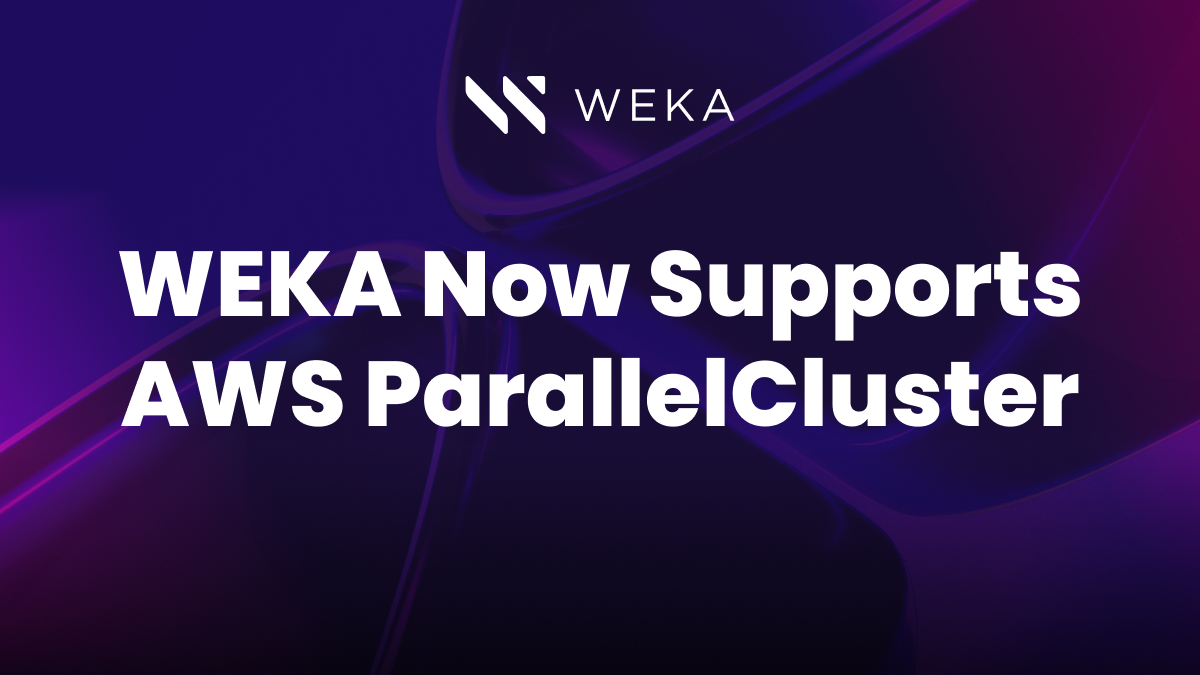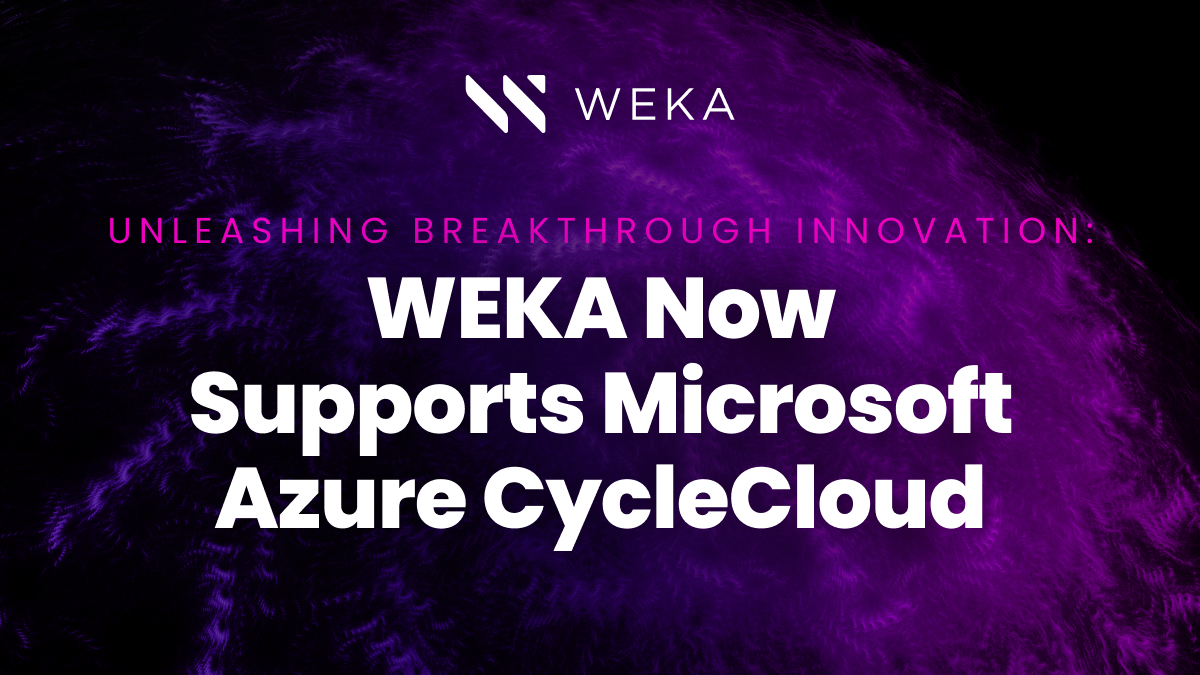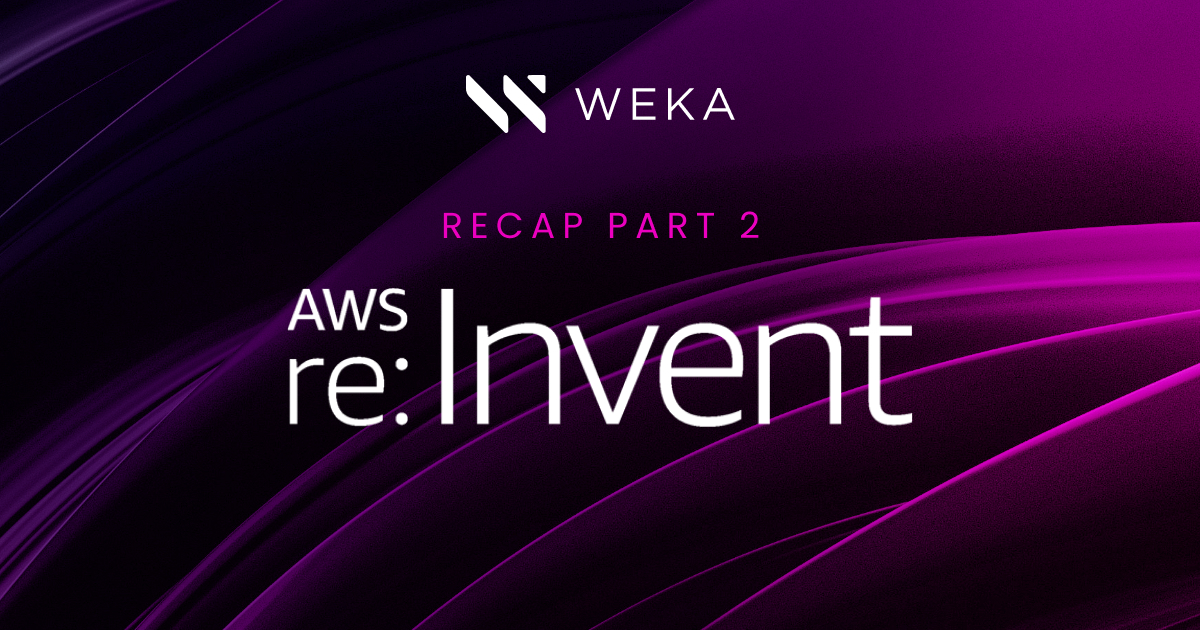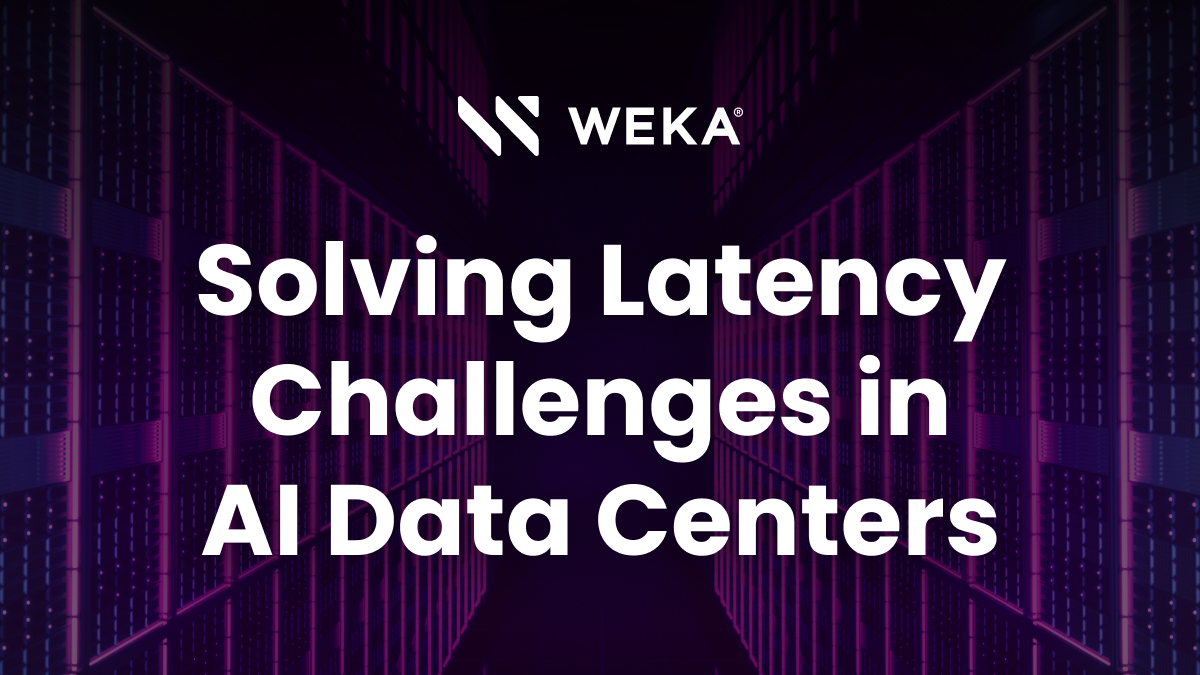Reflections on Oracle Cloud World 2022

Last week, the big Oracle event was back, after a 2-year hiatus, this time in Las Vegas, and rebranded under the very apropos Oracle Cloud World. I joined team WEKA at the show to meet with many of our customers and learn how we can help them on their cloud journey with Oracle Cloud Infrastructure (OCI). In this post, I take a few minutes to share some reflections on those discussions as well as some learnings from the OCW keynotes, and sessions around running accelerated compute workloads in the cloud, what barriers customers still face in the cloud for workloads with unique data residency, security, or performance requirements, and the evolution of hybrid and multi-cloud deployments. If you find this wrap-up helpful, and would like to learn more, visit our WEKA for the Cloud page. Thanks!
All your workloads are belong to accelerated
One of the splashiest announcements right at the start of OCW 22 was of course the big partnership between Oracle and NVIDIA. What I found most interesting about this announcement was the conversation behind the numbers. Right off the bat, Jensen Huang’s remarks during his chat with Safra in the opening keynote pointed this out. With Moore’s Law starting to run out, almost every cloud provider is now trying to find new ways to continue to deliver the price-performance improvements that we’ve become accustomed to. One of the ways to drive that is of course through GPU acceleration (Another is ARM, but I’ll save that for another day). For Oracle, this means a big partnership with NVIDIA, tens of thousands of GPU-enabled shapes, and the full NVIDIA AI stack available for OCI customers.
We see this at WEKA too. Customers across all sorts of industries and use cases are adopting increasingly large clusters of GPU-enabled instances for their most performance intensive workloads. In autonomous vehicle development, customers use massive GPU-accelerated compute clusters to process data incoming from tens of thousands of sensors so they can train and refine the deep learning models for next generation self-driving cars. In genomics processing, customers like 23andMe are using it to analyze thousands of samples of human DNA every day. In visual effect rendering, customers like Preymaker use it to produce award winning content much faster and with higher quality than was previous possible. And in natural language processing, the Adept AI team reinforced that point during the OCI keynote in talking about their mission to completely revolutionize the way humans interact with computers. These projects have a few things in common. They all rely on 1000’s of interconnected GPUs and huge data sets to run their workloads. They all expect they will need to scale up these projects a lot, from what is already a massive scale. And they need a way to do all this with reasonable economics.
Run your workloads wherever you need them
Next, I had a chance to attend a few sessions on hybrid cloud architectures and was struck by the diversity of infrastructure offerings Oracle customers choose from. They have OCI Regions for customers who want the fully managed Oracle Cloud. Customers can use OCI Dedicated Region for the full stack of OCI services, fully managed by Oracle, residing on the customer premises (and have the budget to pay for it!). And there’s Cloud@Customer for customers who want a more focused stack of services (for either Exadata or Compute), self-managed, and with better economics than a dedicated region. This week, Oracle announced Oracle Alloy for Oracle partners who want to deliver their own cloud services to their customers and effectively operate as a cloud provider themselves, running on a stack of Oracle Hardware, Software and OCI services. The theme here was all about meeting the complex requirements of mission critical workloads for data residency, security, privacy, and regulatory compliance. For these requirements, I heard from a few customers who appreciated all the ways they can consume OCI infrastructure to ensure data always resides in country and has the right security policies attached to it. The work left to do, as I heard from several people, was the need for better tools to view how governance, security, and privacy policies are enforced and identify places where those policies aren’t being met and then remediate them.
Along similar lines, there were quite a few customers with unique requirements for the performance intensive applications, they’d like to run in the cloud, but a worried about the latency, IO, and throughput that is available for those workloads. For example, one genomics company I spoke with needs to run hundreds of CryoSPARC jobs every day (a popular software platform for pharma companies use in the drug discovery pipelines), requiring hundreds of thousands of IOPs for each job. The customer was looking for a way to use the scale and agility of the cloud to run discovery pipelines faster, without spending blowing up their budget. They were extremely interested in the recent work OCI and Weka have done in delivering a high performance data solution that drove 17 M IOPs and 2 TB/sec data throughput, which you can read about here.
Multiple projects, multiple clouds
Finally, attendees were treated to the mandatory statistics around cloud adoption. It’s 30% of workloads running in the cloud according to Clay Magouryk. This seems high to me. If you use customer spending as a proxy for workload deployment, according to Gartner in 2022 customers expect to spend $410 B on cloud-based deployments against a $4.5 T total IT spend (across all deployment models), which puts us below 10% of workloads. The use of multiple clouds by most customers is also high, 82% at this point, which sounds about right. I spent some time talking to attendees about what is behind those statistics, trying to learn what does a multi-cloud strategy really mean for them. One example of these conversations I’d share came from a regional grocery store who talked about their long-standing investment in Oracle Fusion for ERP and SCM, and how they are developing new digital experiences via web and mobile using the developer tools and infrastructure as code capabilities available from AWS. In their case, it’s two different teams with different missions trying to use the best capabilities available for their projects. One challenge they are worried about now is maintaining a consistent set of data across the physical stores and point of sales stations while operating on Fusion and the rapidly growing online business running on AWS. Right now, they must maintain multiple copies of their data across different platforms and implement expensive replication to ensure their data is consistent across both platforms.
In the realm of multiple clouds, the interesting theme is the need to improve interoperability between cloud platforms. We need better tools for connectivity between cloud platforms, better ways to implement security and observability that spans across multiple clouds, and better technologies to share data securely and consistently to ensure a multi-cloud approach doesn’t end up just being a new set of silos to manage. Customers I heard from indicated they already have investments in multiple clouds, but the tools to make this a seamless experience still need work.
Contact our experts today to learn how you can migrate your cloud systems to WEKA infrastructure or WEKA-powered AWS infrastructure.






